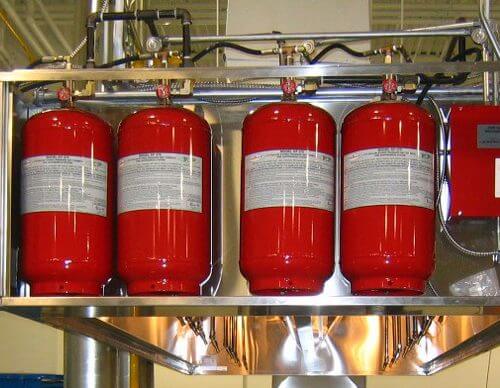Nozzles placed under the cooker canopies and over each risk propel a water-based agent with a chemical foam type mix over the risk. This is usually triggered by a heat link (a thermal link fixed to a wire which breaks and then releases the valve) or a manual pull switch.
The agent is usually situated near the risk in a box. This is basically a large fire extinguisher. Pipework from the nozzles terminate at this point and a valve operates the release. Once the system is triggered the agent is propelled from this valve/cylinder to the nozzles.The agent is a water-based chemical which acts like a foam extinguisher. This is to ensure any flammable liquids are covered by the foam to avoid a boil over from any oven/fryer that may be still switched on, and stops the oil from re-igniting.
Watermist systems can be used for kitchens and can be a more cost-effective solution to Ansul systems and other water chemical systems. However, careful design is needed and approval from insurers.
Other elements of the fire suppression system are triggered from automatic fire detection and back to a fire extinguisher panel. The detection and most equipment in this area needs to be stainless steel to avoid corrosion and the damage/effects of heat.
Get In Touch For A Free Quotation & Advice On Bakki Showers
We have an expert team of advisors on call, ready and waiting to assist you with your enquiry.
If you wish to know more about our fire suppression systems, or if you’d like a free quote then please contact us via our contact page form, or by giving us a call on 0114 276 9000






